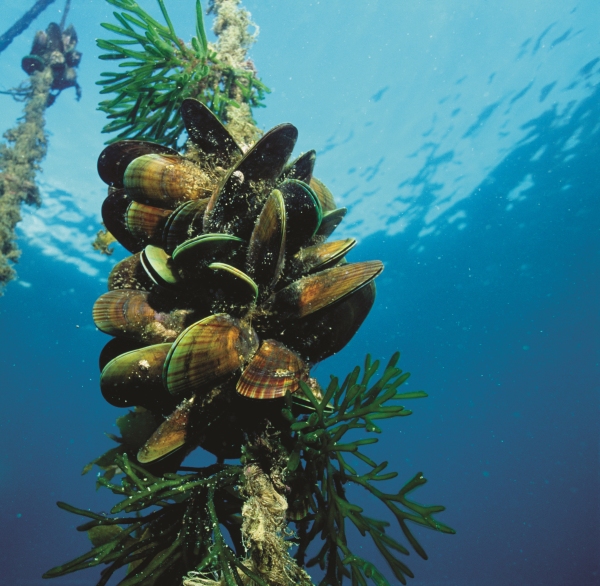It is timely that the nation is turning to confront the threat of ocean acidification. The pH of the world’s oceans is falling in relation to the increase in atmospheric carbon dioxide because the oceans absorb more than a quarter of that CO2. Around the world there is mounting concern about the impacts that future pH levels are likely to have on survival and growth of shellfish and other marine organisms.
By John Morgan, Chief Executive of NIWA
New Zealand’s answer is a model of cooperation and foresight across central and local government agencies, the fishing industry, the scientific community, iwi and other community representatives. Like the Government’s National Science Challenges, it is a model of the ‘best team’ approach – when organisations pool talent and resources to find solutions to national, or global, issues.
The aquaculture sector has set a target of $1 billion in export earnings by 2025. One key to achieving this ambitious target is the commercialisation of high-value finfish to complement New Zealand’s magnificent salmon aquaculture, and we at NIWA have made huge progress towards such success with kingfish and hapuku at our Northland Marine Research Centre at Bream Bay.
Ocean acidification challenges the aquacultures export earnings goals
Some of the aquaculture sector’s growth target, however, is expected to come from the current shellfish mainstays of the sector – mussels and oysters – but ocean acidification, and other environmental changes such as increasing sea temperatures, will challenge the achievement of that goal. The early pioneers in ocean pH studies now seem extraordinarily prescient. Ocean pH is now falling faster than any time in the past 250 years – during which it has already fallen by 26%.
The Government has put almost $5 million into a four-year research project to assess this threat. It’s an investment which could well help the industry realise the $1 billion goal.
CARIM will study the link between changes in ocean pH and changes in marine species
The project, dubbed CARIM (Coastal Acidification: Rate, Impacts and Management), is a world-first because it will study the link between real-world changes in ocean pH and actual changes in marine species. It will ascertain the extent of the changes acidification will cause, and identify ways we can adapt our aquaculture.
The project involves a series of field and lab experiments, connected with constant measurements of pH levels at up to a dozen coastal locations.
Whilst this is a NIWA-led project, we are collaborating with scientists from other organisations, and we are working directly with the shellfish sector and community representatives. The industry is, for example, running some of the monitoring stations.
CARIM shows what cooperation, optimism and smart science can do
Underlining the foresight of the CARIM project is that it has connected and enlarged a fragmented assortment of unique scientific projects. NIWA scientist Kim Currie, for example, has been monitoring pH in the waters off Otago for 17 years. Over time, she has been joined by shellfish farmers and others to form a small network of monitoring stations.
The shellfish farmers want to know what’s happening, and they want to know how quickly it is happening – that information will be fundamental in helping them grow their industry.
CARIM is an illustration of cooperation, optimism and smart science. It is an excellent example of what is required to help New Zealand’s primary industries successfully adapt to the environmental changes we will face over the coming decades.
I will be watching the results eagerly – they have huge ramifications for our industry and fishing culture in New Zealand, and for the rest of the world.
- More News
- Read Water & Atmosphere Issue 14, November 2015
- What is ocean acidification?
- Investigating ocean acidification
- New Zealand Ocean Acidification Observing Network (NZOA-ON)
- NIWA science delves into ocean acidification


